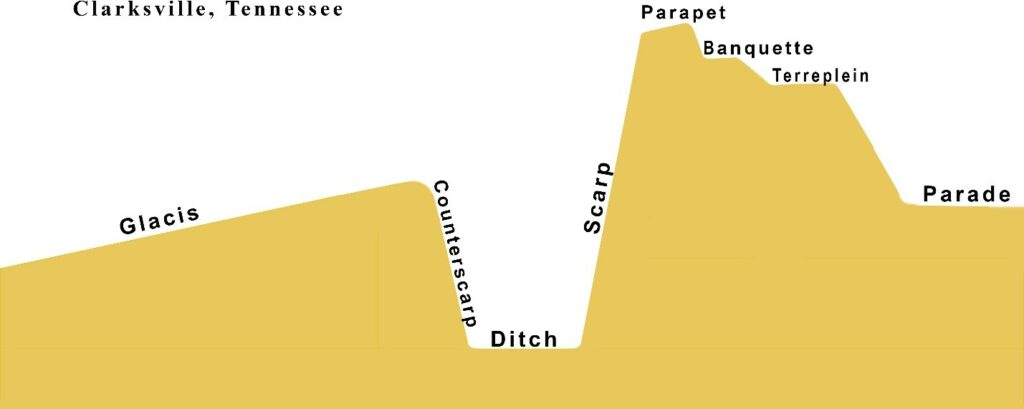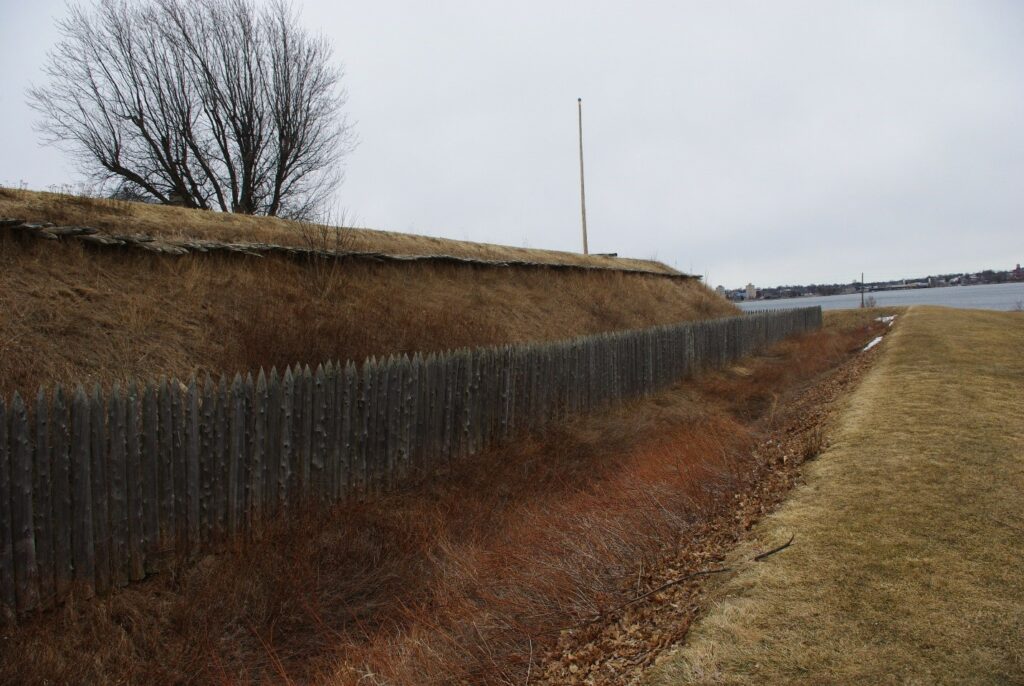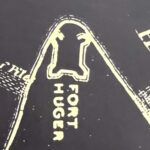Fortification Terminology
Parapet:
The parapet is the highest point on the walls of the fort. Battery Huger has a wall surrounding the fort, with the highest point of that wall being the parapet. The parts of the surrounding wall, from the ditch inward, are the scarp (exterior wall), the outer slope (sloped earth at the top of the scarp with a very steep angle), the superior (French for top) slope (a shallow slope at the top of the wall), the parapet (the highest point of the fort, where the superior slope ends), the breast-high wall (the vertical wall behind which the guns are mounted and where riflemen would stand), the banquette (firing step) or barbette (gun platform), the banquette slope (where the earth slopes down from the banquette to the terreplein), the terreplein (the flat earthen area where troops can be moved around on the ramparts (the mass of the fort, from the scarp to the parade slope) of the fort, the parade slope (the steep angle of earth leading from the terreplein to the parade (the flat area the makes up the center of the fort).

Transom pintles:
Battery Huger mounted cannons on center-pintle mounts, where the gun pivots around the center of the carriage, allowing a field of fire of 360 degrees. This is opposed to fore-pintle (or front pintle) mounts, which have about a 125-degree field of fire. A 15-inch Rodman cannon on a center-pintle mount is pictured here.

Merlons
Merlons are projections of the scarp that stick up above the parapet. Like the wall atop a castle, a crenelated wall has alternating merlons and crenels. Guns or riflemen would fire between the merlons.
Rampart
The ramparts form the mass of the fort’s walls. It is the area from the scarp to the parade slope.
Ditch flanked by a stockade under cover of a Glacis
A stockade, wooden posts set side-by-side to form a wall, set in the center of the ditch. The height of this stockade would be below the level of the termination of the glacis (the earthen slope leading to the fort), thus protecting it from artillery fire. This forms a barrier to infantry attack.[1]

[1] John Weaver, Email Interview, January 21, 2024.
